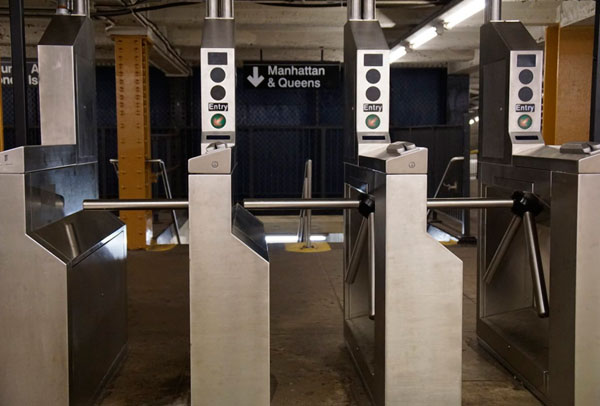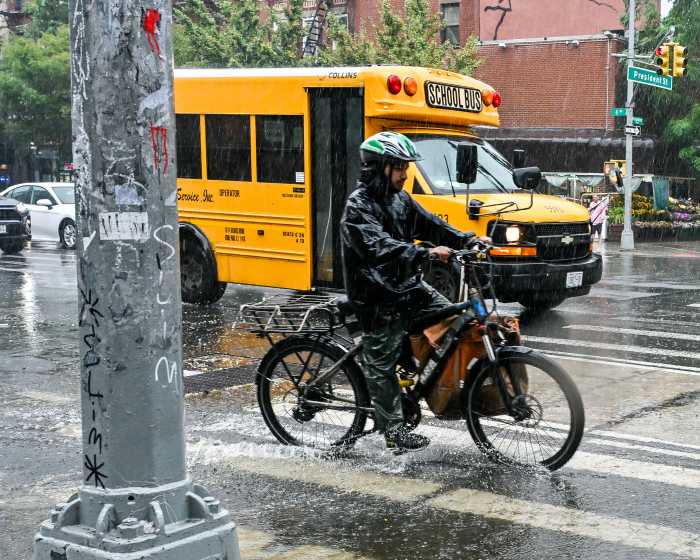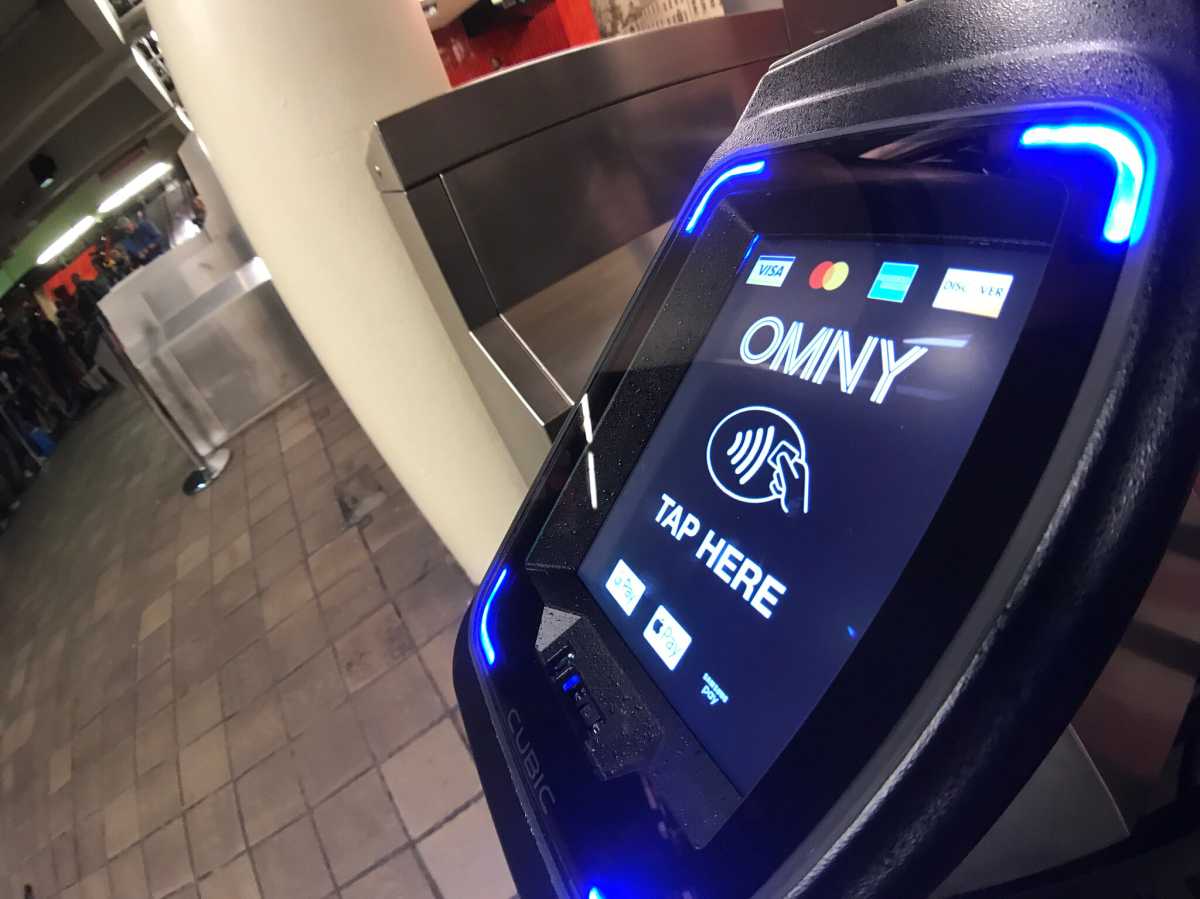Talk about a good turn.
The Metropolitan Transportation Authority replaced the four clunky old revolving-door turnstiles at the Seventh Avenue F and G stop in Park Slope with eight waist-high, horizontal ones last week, which is great news for local parents who say the lower, lighter gates are much more compatible with children’s puny bodies and still-forming muscles.
“I like them much better,” said Simone Procas, who’s lived in Park Slope for more than a decade. “My kids use these turnstiles, and they’re much easier.”
The so-called “high-volume” turnstiles, located at station entrances on Seventh and Eighth avenues, are supposed to be 50 percent faster than their vertical counterparts, and the four new entry points at the Seventh Avenue end of the station in particular are expected to increase capacity there threefold, according to transit authority spokeswoman Amanda Kwan.
Some adults with fully-grown limbs, however, don’t seem to fully appreciate the upgrade.
“It didn’t really bother me before,” said 17-year Sloper Liz Gavril. “But I don’t have a problem with the new ones.”
“It doesn’t really change anything,” said Ninth Street resident James Johnson.
But many citizens had complained in the past about the slower upright gates, which were located closest to the station’s entrances and often became backed-up during rush hour, according to Councilman Brad Lander (D–Park Slope).
Residents first pitched the replacement gates during a participatory budgeting session in 2014, and though his constituents ultimately voted to put money towards other projects that year, the transit authority took the idea and ran with it, he said.
But Lander still isn’t satisfied that the station is sufficiently navigable, and is also lobbying the transit authority to install elevators there, citing the surrounding area’s growing senior population and the station’s proximity to Methodist Hospital as reasons it needs a handicap-accessible commute.
“With the hospital and growing number of seniors, I think we have a strong case,” said Lander. “It’s the right thing to do.”
But that won’t happen anytime soon, according to a spokesman for the agency.
Seventh Avenue is not one of the 100 “key stations” where it says elevators are most needed — a list it has been working its way through since the enactment of the Americans with Disabilities Act in 1990, according spokesman Kevin Ortiz. The agency has since upgraded 86 stops, and the remaining 14 won’t be online until 2020, he said.
Lander hopes to get Seventh Avenue on any subsequent lists.
It won’t come cheap, though — Ortiz says installing elevators in the city’s aging subway stations can top $10 million per cab — a result of obtaining street space, rerouting utilities, and reconstructing station components to accommodate the new amenities — and Seventh Avenue will require no less than three elevators to become fully compliant with the disabilities act.
“An elevator does not come cheaply,” he said.

























